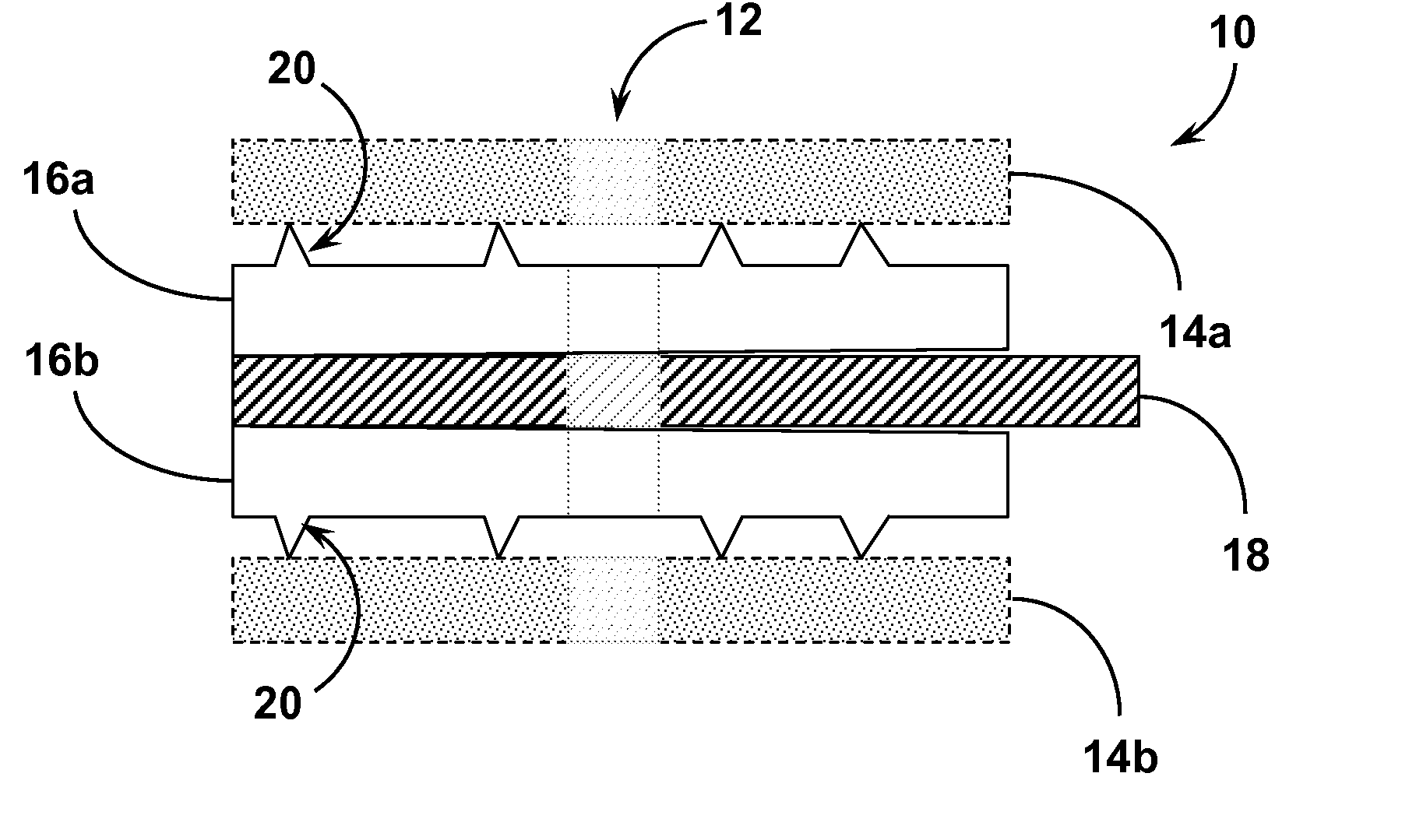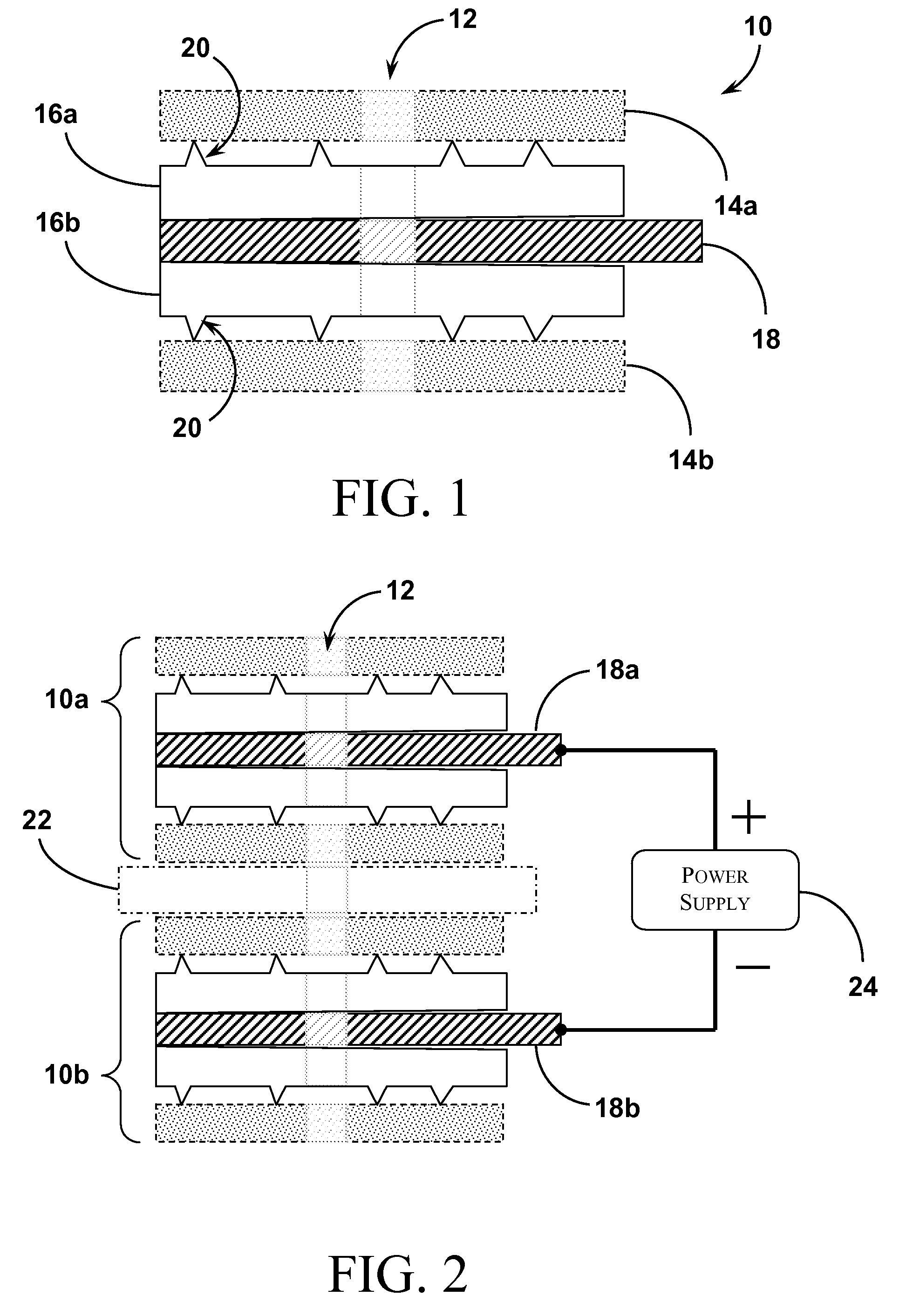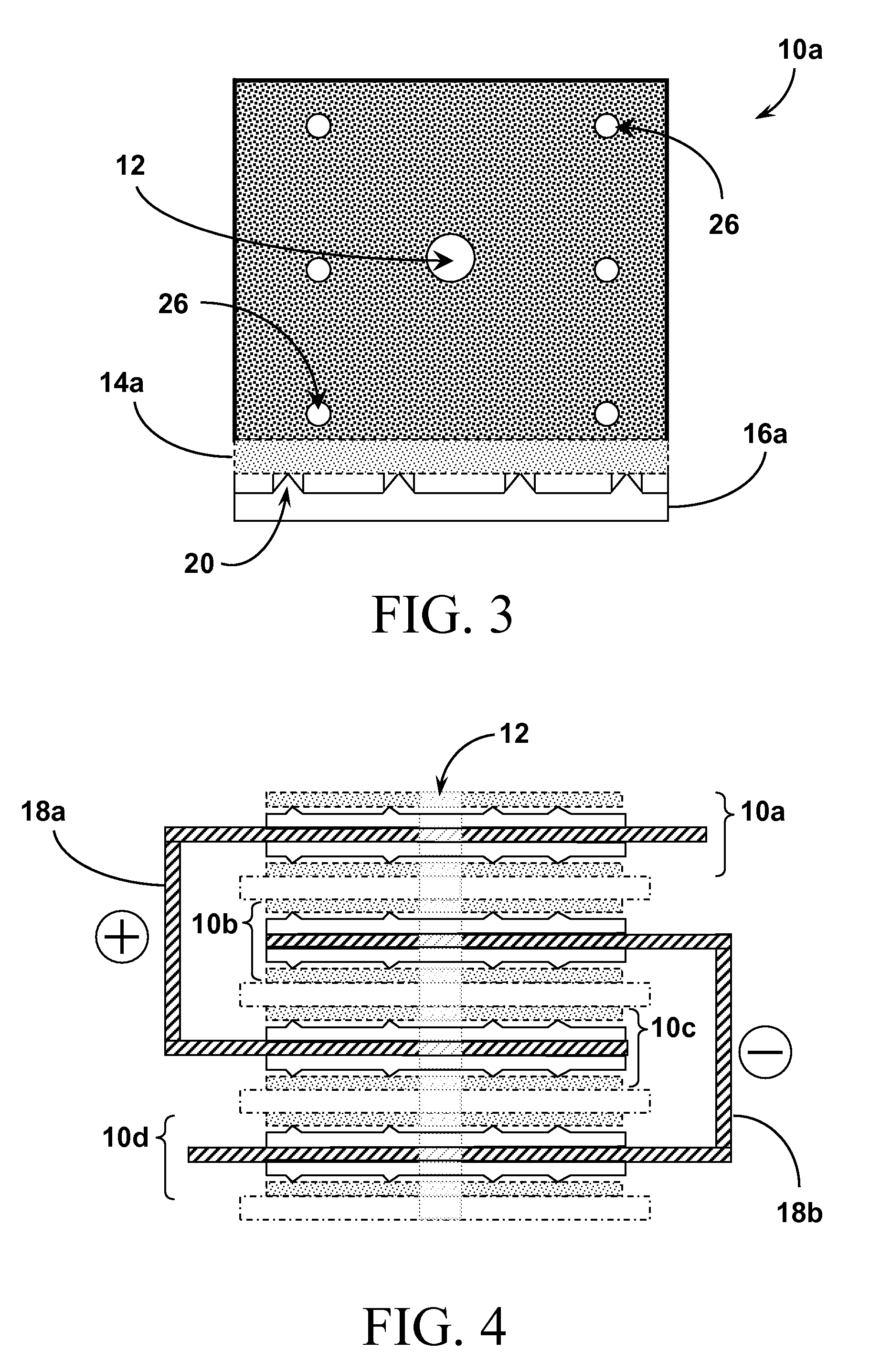Hybrid Capacitive Deionization and Electro-Deionization (CDI-EDI) Electrochemical Cell for Fluid Purification
a capacitive deionization and electrochemical cell technology, applied in the field of fluid purification systems and methods, can solve the problems of complex structure and functional characteristics, inability to fully expel ions, and inability to conform to the structure and function of such systems, so as to improve the function of the coating, accelerate the electrical discharge of the cell, and accelerate the expulsion of ions.
- Summary
- Abstract
- Description
- Claims
- Application Information
AI Technical Summary
Benefits of technology
Problems solved by technology
Method used
Image
Examples
Embodiment Construction
[0024] The combination of a number of improvements over the prior art as described by the present invention, provides for a novel electrochemical cell subassembly operable within a novel hybrid capacitive deionization / electro-deionization (CDI-EDI) cell. These improvements, both to the subassembly structure and the cell enclosure structure, also provide for an efficient manufacturing process for constructing and enclosing the cell. As described above, the present invention provides a manner of improving the function of the coating in the hybrid system by perforating the coating with pin holes and using spacers to separate the coating from the electrodes in the cell.
[0025] In the hybrid CDI-EDI cell structure of the present invention, the semi-permeable layers may be constructed as membranes or as coatings. The charge on the coatings is derived for the chemical composition of the polymer used in the formulation of the coating as is known in the art, so as to cause it to be a cation ...
PUM
| Property | Measurement | Unit |
|---|---|---|
| thick | aaaaa | aaaaa |
| dead volume | aaaaa | aaaaa |
| thickness | aaaaa | aaaaa |
Abstract
Description
Claims
Application Information
 Login to View More
Login to View More - R&D
- Intellectual Property
- Life Sciences
- Materials
- Tech Scout
- Unparalleled Data Quality
- Higher Quality Content
- 60% Fewer Hallucinations
Browse by: Latest US Patents, China's latest patents, Technical Efficacy Thesaurus, Application Domain, Technology Topic, Popular Technical Reports.
© 2025 PatSnap. All rights reserved.Legal|Privacy policy|Modern Slavery Act Transparency Statement|Sitemap|About US| Contact US: help@patsnap.com



